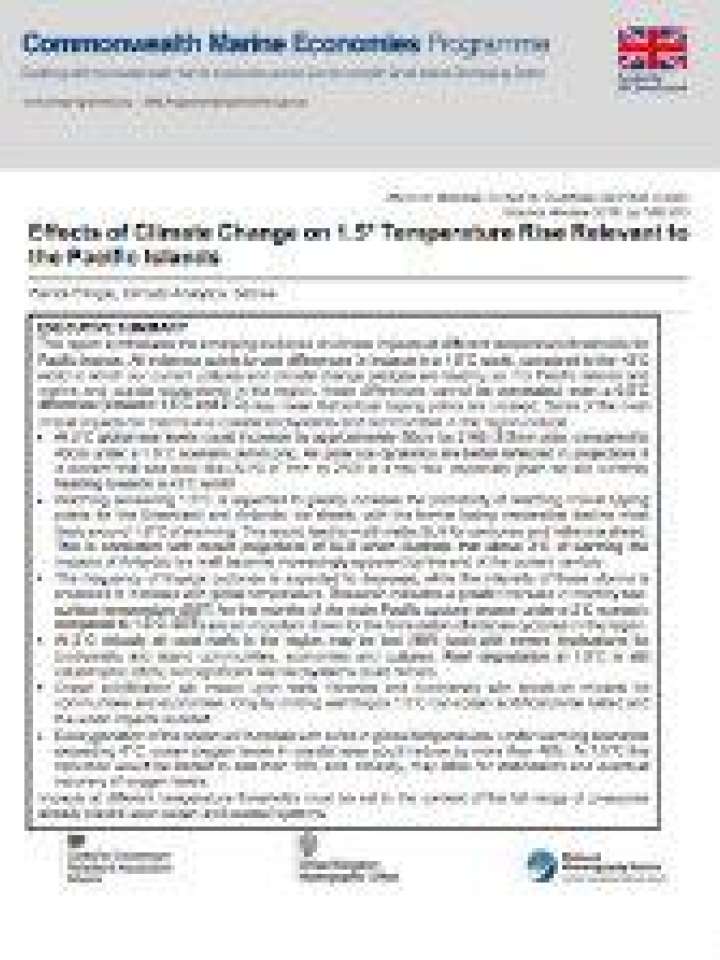Effects of climate change on 1.5° temperature rise relevant to the Pacific islands
This report synthesizes the emerging evidence of climate impacts at different temperature thresholds for Pacific islands. All evidence points to vast differences in impacts in a 1.5˚C world, compared to the +3˚C world to which current policies and climate change pledges are leading us. For Pacific islands and marine and coastal ecosystems in the region, these differences cannot be overstated; even a 0.5˚C difference (between 1.5˚C and 2˚C) may mean that critical tipping points are crossed.
Some of the most critical impacts for marine and coastal ecosystems and communities in the region include:
- The frequency of tropical cyclones is expected to decrease, while the intensity of these storms is projected to increase with global temperature. Research indicates a greater increase in monthly seasurface temperature (SST) for the months of the main Pacific cyclone season under a 2˚C scenario compared to 1.5˚C. SSTs are an important driver for the formulation of intense cyclones in the region.
- Deoxygenation of the ocean will increase with a rise in global temperatures. Under warming scenarios exceeding 4°C, ocean oxygen levels in coastal seas could reduce by more than 40%. At 1.5°C this reduction would be limited to less than 10% and, critically, may allow for stabilization and eventual recovery of oxygen levels.
Impacts at different temperature thresholds must be set in the context of the full range of pressures already placed upon ocean and coastal systems.
Explore further
